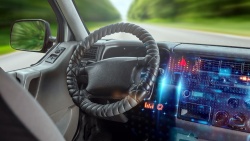In the face of the coronavirus alarm situation (COVID-19), photonics technologies can provide fast and accurate diagnostic solutions.
Check out secpho’s Press Release Photonics in coronavirus detection, where you will find a description of previous applications.
Summarizing, from secpho, the Spanish deep tech cluster, we highlight the following technologies:
Infrared Thermography. Through a camera with infrared sensors, a thermal map of the skin can be generated in real time. Combined with appropriate software, such as the bcbMonitor from the company BCB Informática y Control or those of FLIR Systems also distributed by Álava Ingenieros, it allows alarms to be generated if the established temperature threshold is exceeded. This is a technology that allows rapid screening of large groups of individuals or at points of high human traffic and has already proved effective in the past in curbing other viral outbreaks such as swine flu, avian flu, Ebola or SARS.
Computer Vision. The combination of an infrared image library and behavioural study could be used in high traffic locations without the need for citizens to pass through a particular checkpoint. The Tecnalia research centre has developed a library of infrared images to monitor temperature that could be combined with the study of people’s posture to detect behaviour that is outside what is considered normal. In other words, by analysing an individual’s position, the algorithm can detect whether the subject is feeling dizzy or confused.
Infrared Thermography + Computer Vision + Machine Learning. The Medical Technology team of the Instituto de Astrofísica de Canarias (IACTEC) is developing the first prototype of a portable, low-cost, multi-channel sensor with free software for the detection of anomalous surface temperature patterns, which combines an infrared camera and Machine Learning algorithms that allow the recording and segmentation of body areas of interest. When this technique is applied to facial recognition, people with altered temperature patterns can be automatically identified.
Virus sensors. The IMDEA Nanoscience Institute develops sensors based on gold nanoparticles in which a control changes colour when it comes into contact with samples of a given virus. Taking a photograph of the core with a mobile phone would determine the status of the infection. The development of this test for the new described variant of coronavirus could be applied to their detection.



